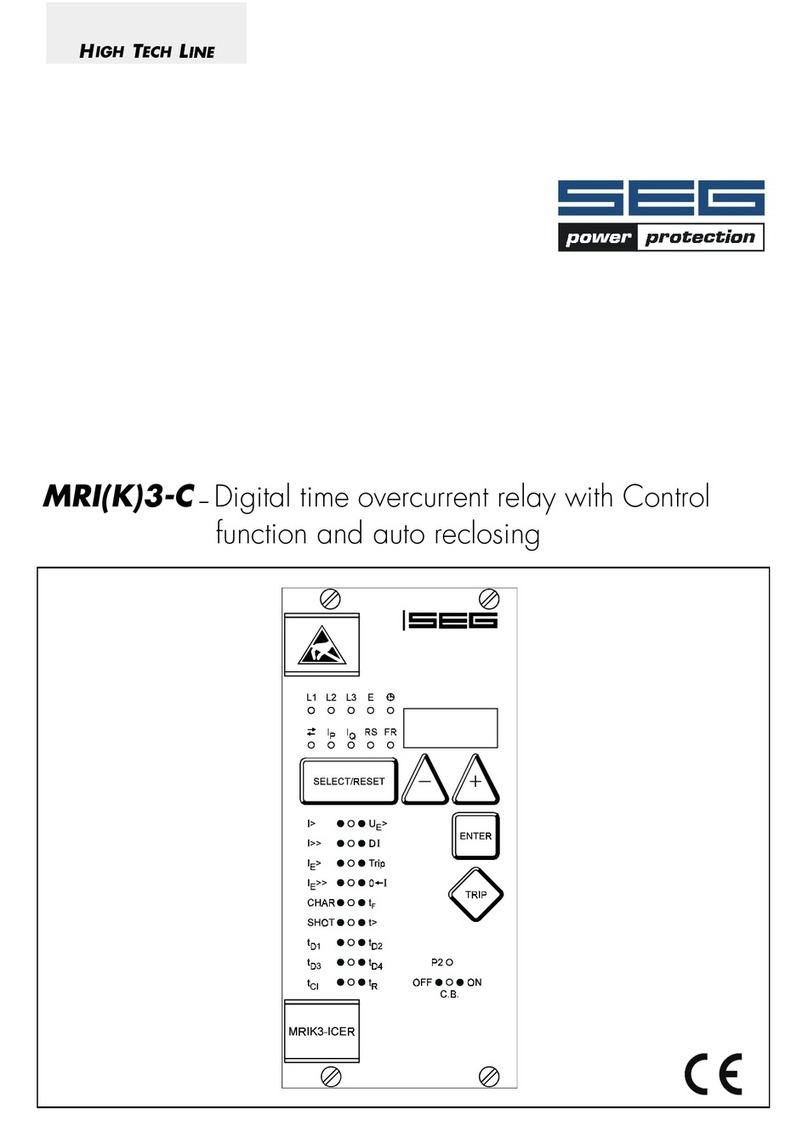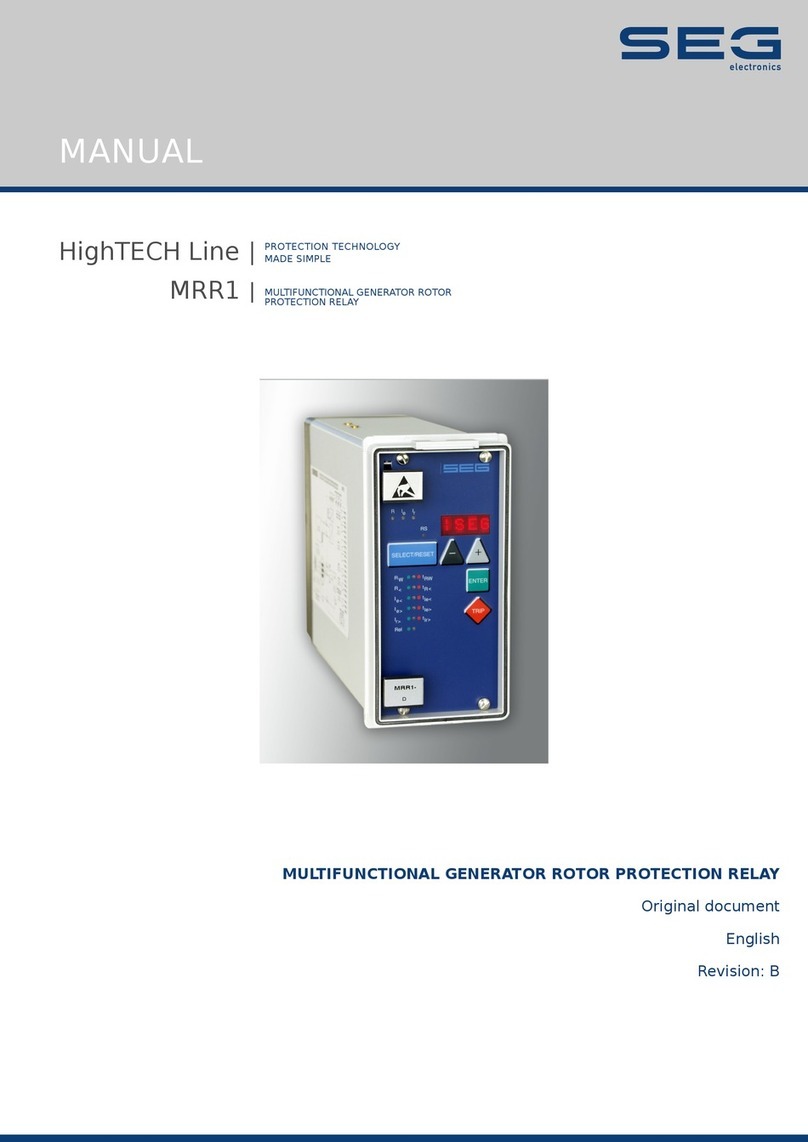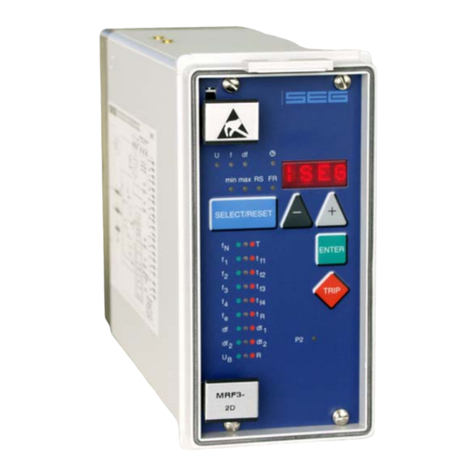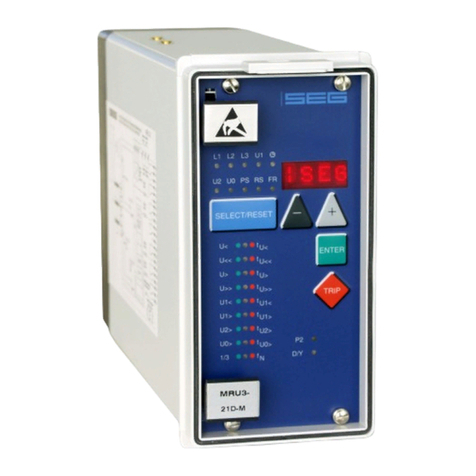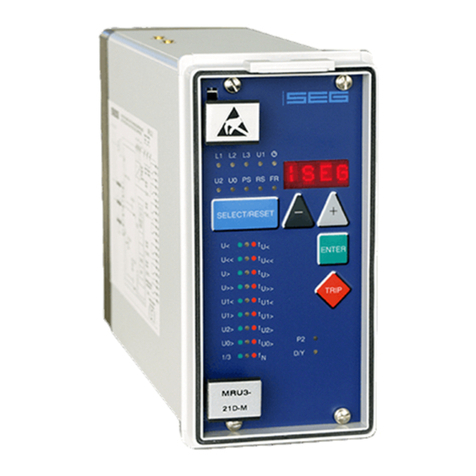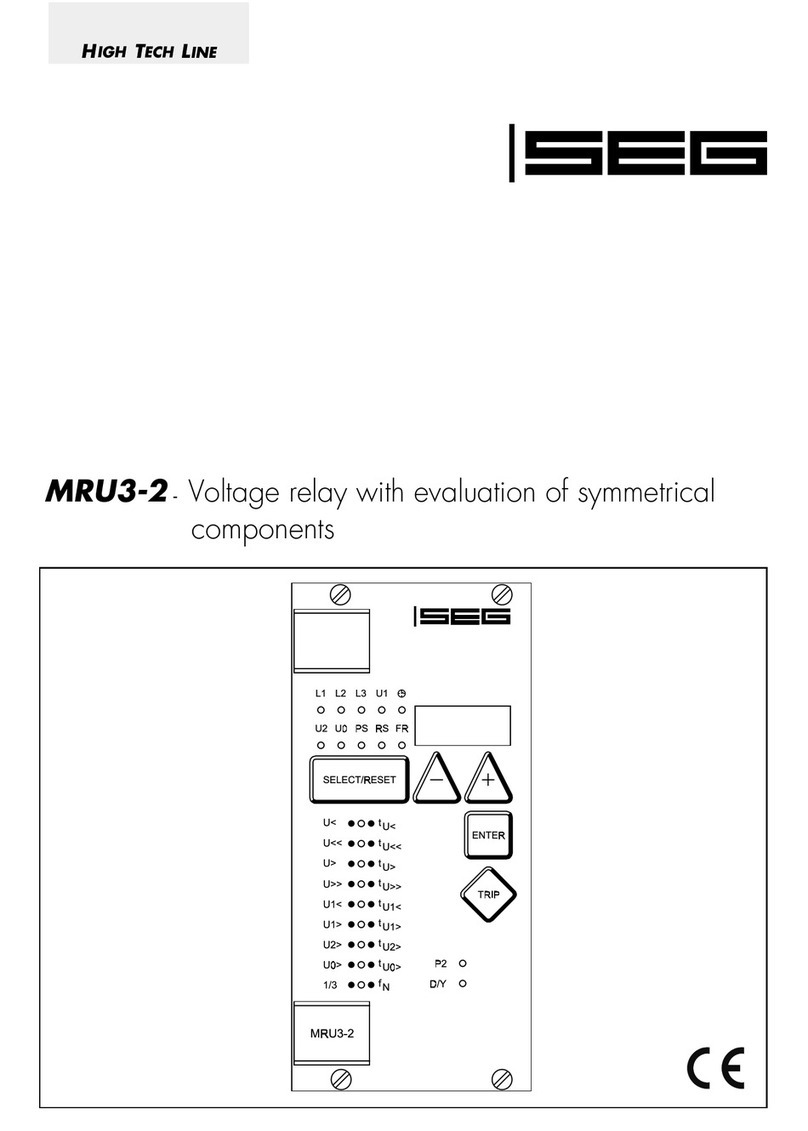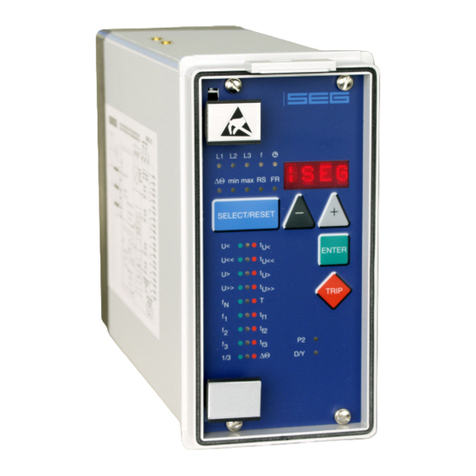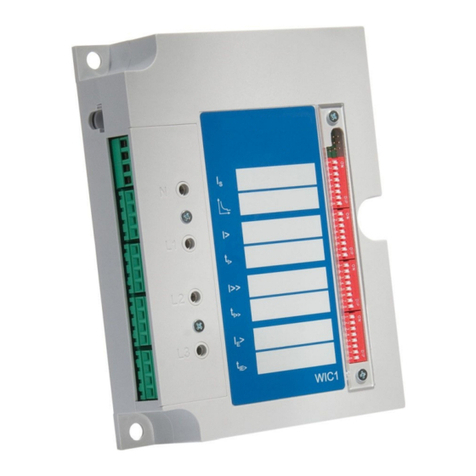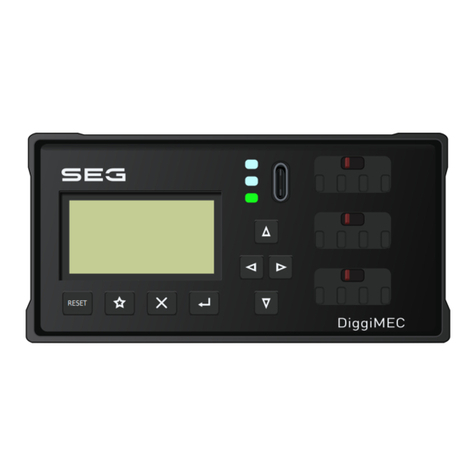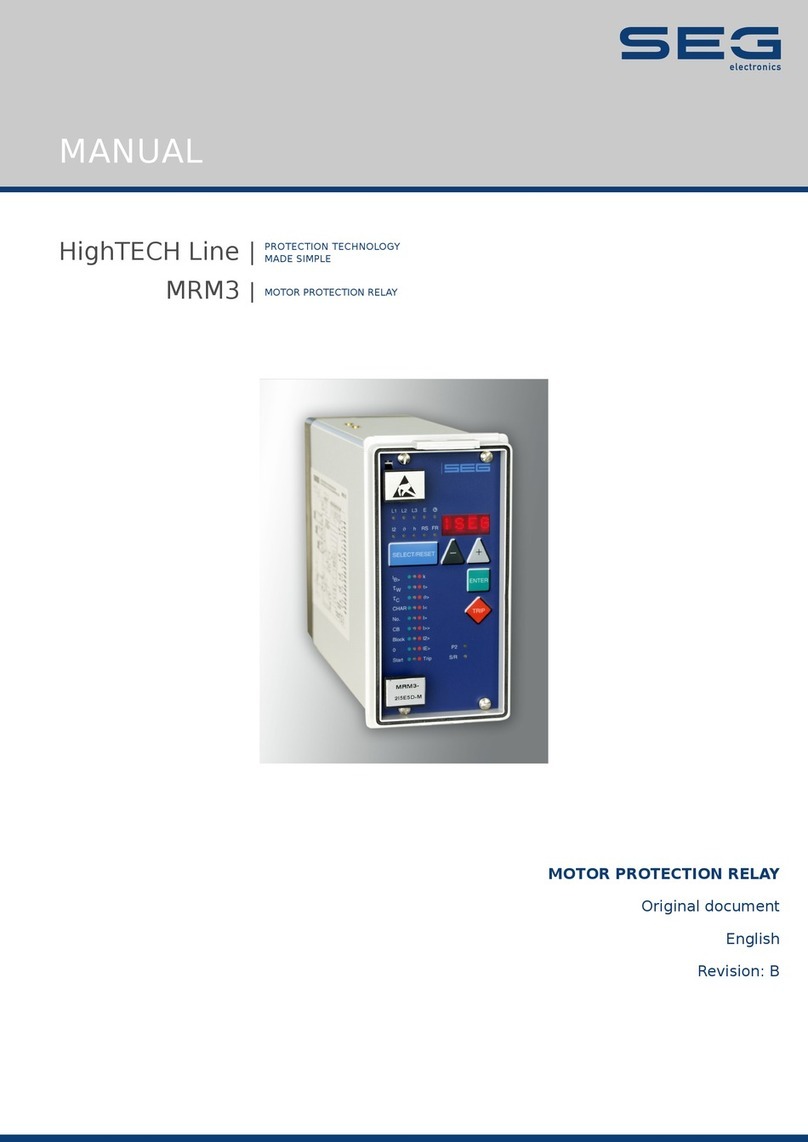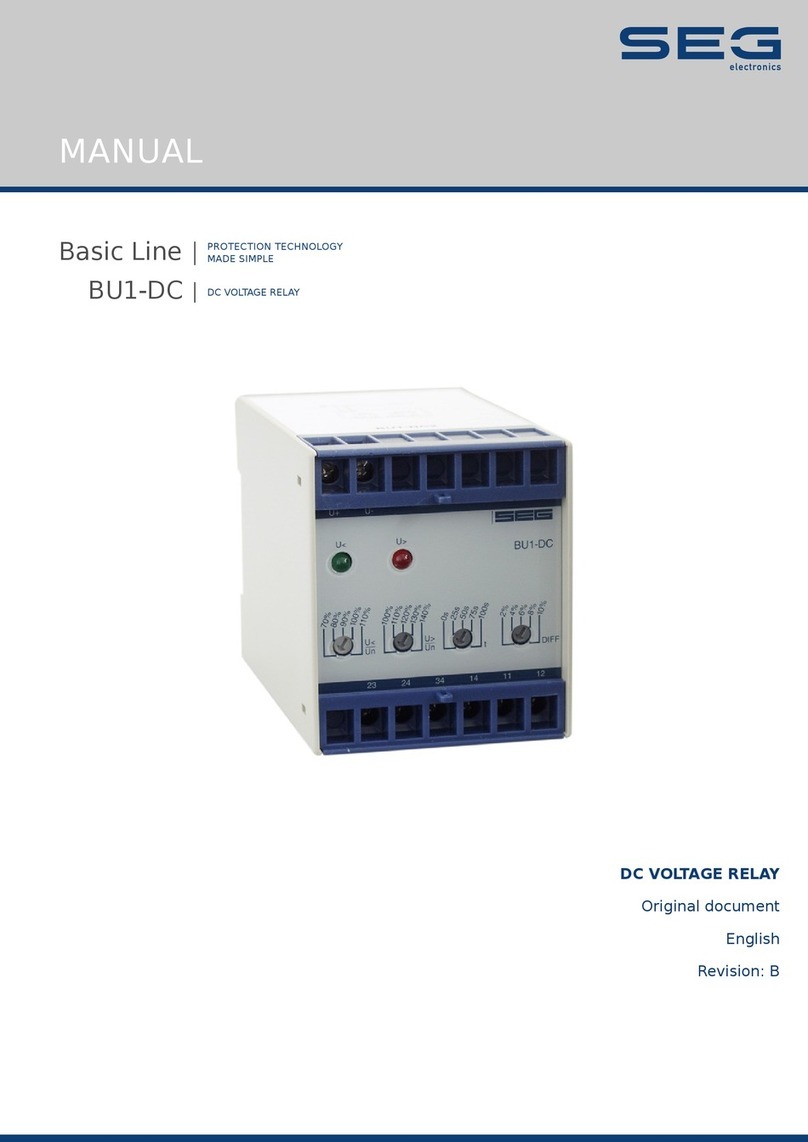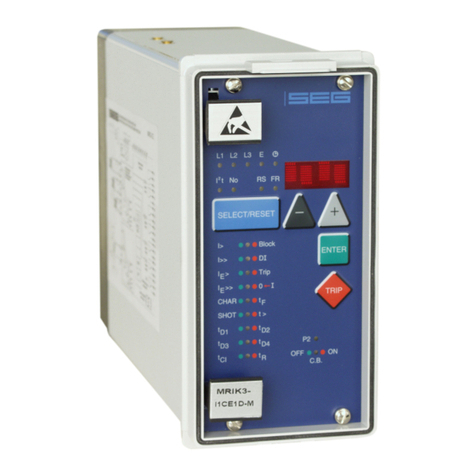
4TB MRN3 12.00 E
1 Introduction and application
The MRN3 is a universal mains decoupling device and
covers the protection requirements from VDEW and
most other utilities for the mains parallel operation of
power stations.
•Over/ and undervoltage protection,
•over/ and underfrequency protection,
•extremely fast decoupling of generator in case of
mains failure (MRN3-1) or
•rate of change of frequency df/dt (MRN3-2)
Because of combination of three protectional functions
in one device the MRN3 is a very compact mains de-
coupling device. Compared to the standardly used sin-
gle devices it has a very good price/performance ratio.
For applications where the single protection functions
are required SEG can offer the single MR-relays as fol-
lows:
•MRU3-1 four step independent over-/ and under-
voltage protection (also used for gene-
rator earth fault protection).
•MRU3-2 two step independent over-/ and under-
voltage protection with evaluation of the
symmetrical voltage components.
•MRF3 four step independent over/ and under-
frequency protection and two step
frequency gradient supervision df/dt.
•MRG2 generator mains monitor / vector surge
detection.
Important:
For additional common data of all MR-relays please re-
fer to technical description "MR - Digital Multifunctional
Relays".
2 Features and characteristics
•Microprocessor technology with watchdog,
•effective analog low pass filter for suppressing har-
monics when measuring frequency and vector surge,
•digital filtering of the measured values by using dis-
crete Fourier analysis to suppress higher harmonics
and d.c. components induced by faults or system op-
erations,
•integrated functions for voltage, frequency and vector
surge in one device as well as single voltage, fre-
quency and vector surge devices,
•two parameter sets,
•voltage supervision each with two step under-/ and
overvoltage detection,
•frequency supervision with three step under-/ or over-
frequency (user setting),
•completely independent time settings for voltage and
frequency supervision,
•adjustable voltage threshold value for blocking fre-
quency and vector surge measuring,
•display of all measuring values and setting parameters
for normal operation as well as tripping via a alpha-
numerical display and LEDs,
•display of measuring values as primary quantities
•Storage of trip values and switching-off time (tCBFP) of 5
fault occurences (fail-safe of voltage),
•recording of up to eight fault occurences with time
stamp
•for blocking the individual functions by the external
blocking input, parameters can be set according to
requirement,
•user configurable vector surge measurement 1-of-3 or
3-of-3,
•reliable vector surge measuring by exact calculation
algorithm,
•suppression of indication after an activation
(LED flash),
•free assignment for output relays,
•display of date and time,
•in complience with VDE 0435, part 303 and IEC
255,
•serial data exchange via RS485 interface possible;
alternatively with SEG RS485 Pro-Open Data Protocol
or Modbus Protocol.
